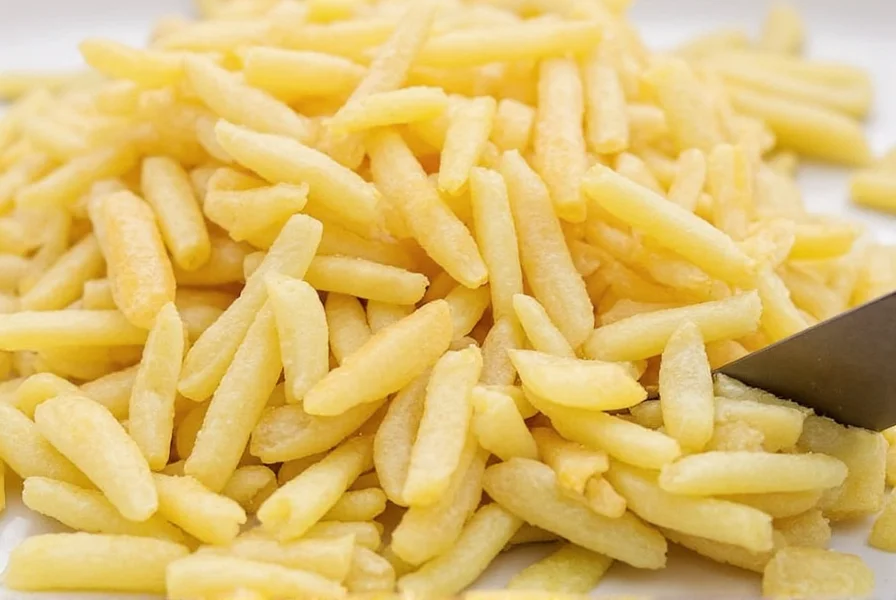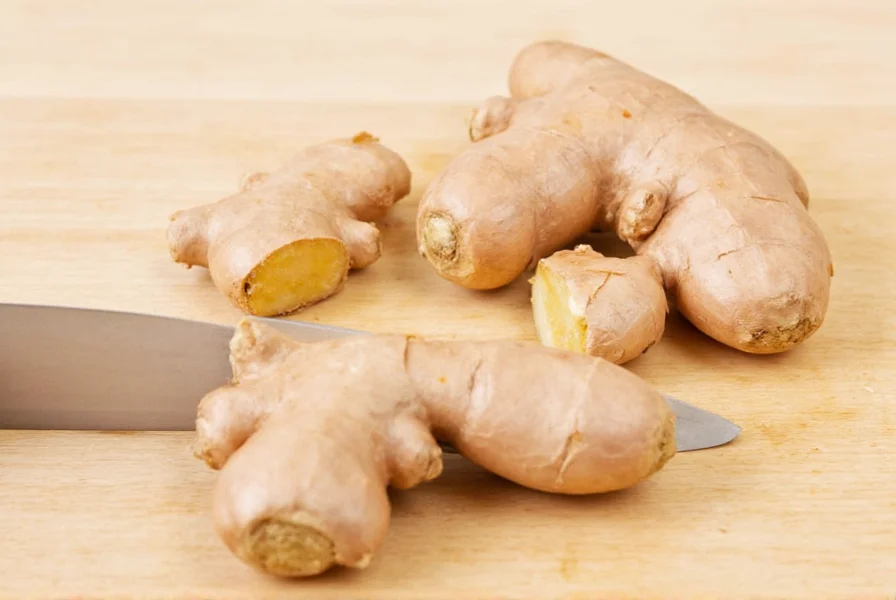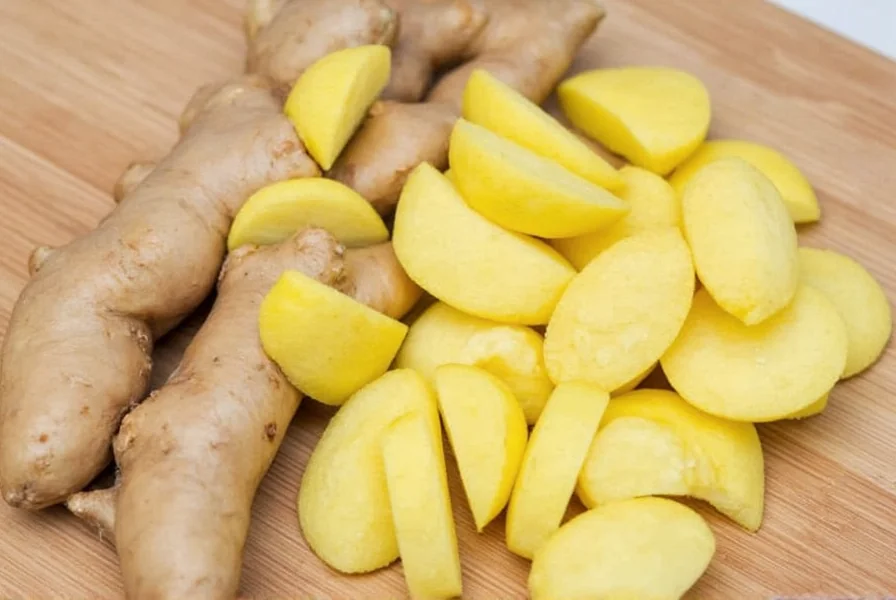To mince ginger root effectively, peel the skin, slice it thinly, then finely chop the slices with a sharp knife. Alternatively, use a microplane grater, ginger grater tool, or food processor for faster results. Proper mincing releases ginger's flavor while ensuring even distribution in dishes without creating fibrous chunks.
Why Proper Ginger Mincing Matters
Ginger's fibrous structure makes proper mincing crucial for cooking. When ginger isn't minced correctly, you'll end up with stringy pieces that don't blend well into sauces or marinades. The right technique releases ginger's essential oils while creating uniform pieces that distribute flavor evenly throughout your dish. This is especially important for delicate sauces, dressings, and baked goods where texture matters.
Essential Tools for Mincing Ginger
You don't need specialized equipment to mince ginger properly, but having the right tools makes the process faster and more effective:
| Tool | Best For | Result Quality |
|---|---|---|
| Sharp chef's knife | Traditional mincing method | ★★★★☆ (Excellent control) |
| Spoon (for peeling) | Removing skin without waste | ★★★★★ (Most efficient) |
| Microplane grater | Ultra-fine mince for sauces | ★★★★☆ (Smooth texture) |
| Ginger grater tool | Quick preparation | ★★★☆☆ (Slightly coarse) |
| Food processor | Large quantities | ★★★☆☆ (Can become paste) |

Step-by-Step Ginger Mincing Method
1. Selecting and Preparing Your Ginger
Choose firm, smooth ginger root with taut skin and no wrinkles. Refrigerated ginger lasts longer but becomes harder to work with, so let it sit at room temperature for 30 minutes before mincing. This makes the fibers more pliable and easier to cut through.
2. Peeling Ginger Without Waste
Forget vegetable peelers—they remove too much valuable flesh. Instead, use the edge of a spoon to scrape off the skin. The spoon's curvature follows ginger's natural shape, removing only the thin outer layer while preserving maximum usable root. This technique for mincing fresh ginger saves up to 30% more usable ginger compared to traditional peelers.
3. Slicing Before Mincing
Cut the peeled ginger into 2-inch segments, then slice each segment paper-thin against the grain (perpendicular to the fiber direction). This breaks up the tough fibers, making the subsequent mincing much easier. The thinner your slices, the finer your final mince will be.

4. The Rocking Chop Technique
Gather your thin slices into a small pile. Hold your knife tip down with one hand while using a rocking motion with the other hand to chop the ginger. Move the knife steadily across the pile, turning it occasionally to ensure even mincing. For the finest mince, sprinkle a pinch of salt over the ginger before chopping—it helps break down fibers and prevents sticking.
Professional Tips for Perfect Ginger Mince
Experienced chefs use these techniques when mincing ginger for stir fry and other dishes:
- Freeze before mincing: Place peeled ginger in the freezer for 15-20 minutes. The cold temperature firms up the fibers, making for cleaner cuts and less stringiness
- Use a damp cloth: Place a damp paper towel under your cutting board to prevent slipping during the mincing process
- Reserve ginger juice: As you mince, ginger releases flavorful juice—scrape this into your dish rather than discarding it
- Size matters: For delicate sauces, aim for pieces no larger than 1/16 inch; for heartier dishes like curries, slightly larger pieces (1/8 inch) work well
Common Ginger Mincing Mistakes to Avoid
Even experienced cooks make these errors when learning how to finely chop ginger root:
- Using a dull knife: Dull blades crush ginger fibers instead of cutting them, releasing less flavor and creating uneven texture
- Cutting with the grain: Always slice across ginger's fibers (visible as long strands) for easier mincing
- Over-processing: In food processors, ginger can quickly turn to paste—pulse in short bursts
- Skipping the peel step: Unpeeled ginger has a woody texture that doesn't integrate well into dishes
Storing Minced Ginger Properly
Store freshly minced ginger in an airtight container in the refrigerator for up to 5 days. For longer storage, freeze minced ginger in ice cube trays covered with water or oil, then transfer the cubes to freezer bags. Properly stored minced ginger maintains its flavor and potency for up to 6 months in the freezer. When using frozen ginger, add it directly to hot dishes without thawing for best results.
What's the best way to mince ginger without a grater?
The best way to mince ginger without a grater is using the traditional knife method: peel with a spoon, slice paper-thin against the grain, then use a rocking chop motion with a sharp chef's knife. For extra-fine mince, sprinkle a pinch of salt over the ginger before chopping—it helps break down fibers and prevents sticking while you're learning how to finely chop ginger root.
How fine should ginger be minced for different dishes?
For delicate sauces and dressings, mince ginger to 1/16 inch pieces. For stir-fries and sautéed dishes, 1/8 inch pieces work well. In baked goods, you can go slightly larger (3/16 inch) since the texture will soften during baking. When mincing ginger for cooking Asian cuisine specifically, finer mince (1/16 inch) is generally preferred for better flavor integration.
Why does my minced ginger become stringy?
Ginger becomes stringy when you cut with the grain instead of against it. Always slice ginger perpendicular to its visible fibers (which run lengthwise through the root). Using a dull knife also crushes rather than cuts the fibers, creating stringiness. For the proper technique for mincing ginger, freeze the peeled ginger for 15-20 minutes first—the cold temperature firms the fibers for cleaner cuts.
Can I use a food processor to mince ginger?
Yes, but with caution. Cut peeled ginger into 1-inch pieces and pulse in very short bursts (1-2 seconds at a time). Over-processing turns ginger into a paste. For best results when mincing ginger without a grater, use the food processor only for larger quantities, and check frequently. A microplane grater often produces better texture for small amounts needed in most recipes.
How do I prevent ginger from sticking to my knife?
Sprinkle a pinch of salt over the ginger before chopping—it absorbs moisture and prevents sticking. Alternatively, lightly oil your knife blade with vegetable oil, or dip the knife in cold water between chops. When learning how to get fine ginger pieces, working with slightly chilled ginger (15 minutes in freezer) also reduces stickiness while maintaining proper texture for your dishes.











 浙公网安备
33010002000092号
浙公网安备
33010002000092号 浙B2-20120091-4
浙B2-20120091-4